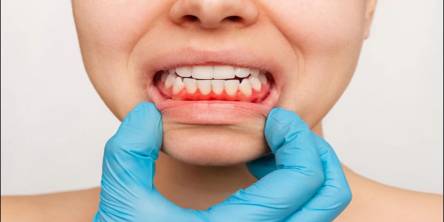Natural Treatment of Fatty Liver Disease with Ayurvedic Herbs & Diet

Abstract
Money can buy luxury, but not health. Modern sedentary lifestyles, dominated by screens, minimal physical activity, unhealthy diets, addictions, and stress, are crippling our society with diseases. A major concern is Fatty Liver Disease (Hepatic Steatosis), affecting over 10 million Indians annually. Caused by excess fat in the liver—either alcohol-related (ALD) or non-alcoholic (NAFLD)—it is often silent but can progress to inflammation, cirrhosis, or liver failure, causing 2.68 lakh deaths yearly. India accounts for 18.3% of global liver disease fatalities. Mindful, clean eating and active living are now the true luxuries, essential for both physical and mental well-being.
Introduction
The liver is the largest gland in our body, weighing approximately 1.5 Kg, and our body's metabolism is highly dependent on this crucial organ. It is located in the upper right quadrant of the abdomen and is a multifunctional organ that performs several essential functions like detoxification, protein synthesis, bile production, and nutrient storage, to name a few. The liver normally breaks down fats, but when there is an excess of fatty acids in the bloodstream, the liver struggles to keep up, and normal liver function is impaired, leading to the development of Fatty Liver Disease. Fatty liver disease (FLD), also known as hepatic steatosis and steatotic liver disease (SLD), is a condition where excess fat builds up in the liver, making up more than 5-10% of the liver’s total weight. This accumulation interferes with normal liver function and, over time, may lead to inflammation or scarring of the liver.
1. ALD
As the name suggests, heavy drinking and alcohol abuse is the primary cause of Alcohol Liver Disease. As the liver breaks down alcohol for metabolism, a toxin is released that damages liver cells. If too much alcohol is consumed repeatedly over time, even without getting drunk, liver damage can silently begin without any symptoms on the surface.
2. NAFLD
Non Alcoholic Fatty Liver Disease is characterised by accumulation of fat in the liver without the alcohol involvement at all. It is strongly linked to obesity, Type 2 Diabetes and metabolic syndrome. It usually goes unnoticed in early stages.
Causes
A lot of major factors and plenty of contributing factors are responsible for fatty liver disease and they are as follows
- Excessive alcohol intake
- Obesity
- Type 2 Diabetes
- Elevated cholesterol and triglycerides levels
- Genetic predisposition
- Unhealthy diet and Sedentary lifestyle
- Metabolic dysfunction
- Exposure to certain toxins and medications
- Liver infections like hepatitis
Symptoms
Usually the disease progresses silently and later presents itself with no to few symptoms.
Early symptoms
- Abdominal discomfort
- Sudden weight loss
- Nausea
- Itchy skin
- Loss of appetite
- Weakness and fatigue
Advanced symptoms
- Enlarged liver
- Jaundice (Yellowing of skin and eyes)
- Dark urine and Pale stool
- Pedal edema
Diagnosis
- Physical Examination - An Enlarged liver may be seen, or jaundice-like symptoms may be noticed upon physical examination.
- Blood tests - LFT (Liver function test) and CBC (Complete Blood Count) may be conducted. Elevated liver enzymes, especially ALT and AST. In Fatty Liver Disease, the ratio of ALT to AST is more than 1.5.
- Ultrasound - increased echogenicity (brightness) shows fat accumulation in liver tissue.
- MRI and CT scan - Can calculate fat percentage in the liver, and helps in tracking disease progression and also the effects of medications.
- Elastography- Assesses liver stiffness and is a useful marker in liver fibrosis and scarring.
- Liver biopsy is a procedure used to assess the severity and stage of the disease. It helps differentiate between simple fatty liver and non alcoholic fatty liver. It is also useful in diagnosing liver cirrhosis and cancer of the liver.
Treatment
A combination of lifestyle changes, a well-planned healthy diet, and medications helps in reversing fatty liver disease. In the case of ALD, cutting off alcohol consumption is crucial.
Medications
- Insulin sensitizers- Pioglitazone or Rosiglitazone
- Lipid lowering agents- Statins (Rosuvastatin , Simvastatin)
- Corticosteroids
- Anti oxidants
Ayurvedic overview on Fatty Liver Disease
In Ayurveda, Fatty Liver Disease is primarily associated with Yakrit Roga (liver disorder). Liver is called Yakrit in Ayurveda. Yakrit is a significant Koshthanga (one of the major eight abdominal organs of our body), and its importance is being reflected in this shloka ( sanskrit text) below:
यकृत् सर्वाणि भूतानि मध्ये तिष्ठन्ति तीव्रतः। न तस्माद्यकृदुत्साद्यं समाचर्य शरीरिणि॥
The above shloka states that "The liver is intensely regarded to be the central organ of all living beings. Therefore, a person should not do anything in their body that may destroy the liver"
Yakrit Roga is caused by excessive body movements right after eating, excessive physical work, carrying excessive weight, excessive walking and as a complication of other diseases due to which the body becomes krisha (weak). All these factors lead to dushti (vitiation) of Kapha and Vata dosha and affect the Jatharagni (Digestive fire). Agnivikruti (Vitiation of the digestive fire) further causes the creation of Apakva Anna Rasa (Improperly produced digestive end product), which again causes more vitiation of Kapha dosha and uneven formation and deposit of Meda (fat tissue) in Yakrit , and this vicious cycle repeats to manifest into Yakrit Roga. It further leads to obstruction of Annavaha srotas (Food Carrying channels), Udakavaha Srotas (Water carrying channels), Rasavaha srotas (Channels carrying Circulatory fluids), Raktavaha srotas (Blood carrying channels), Medovaha srotas (Fat tissue carrying channels) etc.
Patients with Yakrit Roga often complain of Anaha ( abdominal distention) especially on the right side, excessive thirst, indigestion, bodyache, nausea, breathlessness, mild fever, increased or reduced hunger, Shrama (lethargy), Tama (darkness) in front of eyes , distasteful mouth, pain in joints and especially sharp pain is experienced in Amashaya ( stomach) , Pakvashaya (large intestine or colon) and in Basti (urinary bladder). Discolouration of the abdomen may also be seen.
Ayurvedic management of Yakrit Roga focuses on restoring Agni (digestive fire), balancing vitiated doshas, and detoxifying the liver through herbal medications and lifestyle modifications. Nitya Virechana (regular purgative therapy), Asthapan Basti ( decoction enema) with Amla (sour tasting) dravyas to help increase and maintain weakened digestive fire in patients. Some classical formulations like Pippalyadi Churan ( powder to be taken with warm water) , Vidangadi Kshar (1 gm dose to be taken with milk) has excellent results in distended abdomen , Rohitak Ghrit , Takra ( made with honey, til tailam, dried ginger, flannel seeds , saindha namak ) Yakritplihantak Churna, Phaltrikadi Kwath, Bhumi Amla, Punarnava Mandur are very useful in Yakrit Roga.
Ayurveda also helps in curing Yakrit Roga through Agnikarma (Therapeutic Cauterisation).
Agnikarma (Therapeutic Cauterisation) is contraindicated in patients with jaundice with high fever, bleeding disorders (Raktapitta), or excessive weakness (Kshaya). Supportive therapies like Yoga, Pranayama (breathing techniques), and meditation also enhance liver function by reducing oxidative stress and improving metabolism.
Herbal Remedies for Fatty Liver Disease by Planet Ayurveda
Planet Ayurveda is globally recognised for providing pure, natural and effective herbs for various health conditions. Prepared under the supervision of Ayurveda Experts, these herbs are pure, 100% effective and free from side-effects. Planet Ayurveda provides the best combination of effective herbal remedies such as Fatty Liver Care Pack for ayurvedic treatment of fatty liver.
It includes
- Yakrit Plihantak Churna
- Livoplan Syrup
- Liver Detox Formula
Product Description
Yakrit Plihantak Churna
It is a herbally formulated powder consisting of various beneficial herbs like Kalmegh (Andrographis paniculata), Bhumiamalki (Phyllanthus niruri), Katuki (Picrorhiza kurroa), Sharpunkha (Tephrosia purpurea) , Bhringraj (Eclipta alba). These drugs are tikta (Bitter) in rasa (taste) and have shothahar (anti-inflammatory) properties. All these drugs are hepatoprotective in action, help in reviving liver cells and thus are useful in liver anomalies.
Dosage - 1 teaspoonful twice a day before meals with warm water or decoction method.
2. Livoplan Syrup
It's a herbal syrup containing Rohitak (Tecomella undulata), Shyonak (Oroxylum indicum), Patol (Trichosanthes diocia), Bhringraj (Eclipta alba), Bhumiamalki (Phyllanthus niruri) and Kasni (Cichorium intybus). Shyonak is vata-kapha pacifying, Patol is pitta-kapha pacifying, Bhringraj is vata- kapha pacifying, Bhumiamla is kapha-pitta pacifying and Kasni is pitta-kapha pacifying. So this syrup helps in balancing all three doshas. These herbs regenerate the liver cells and protect the liver from toxins. It eliminates the toxins from the liver and provides a healthy liver function.
Dosage - 2 tsp twice a day after meals.
3. Liver Detox Formula
It is a capsule formation, specifically designed to remove toxins from the liver to ensure its optimal function. It consists of Punarnava (Boerhavia diffusa), Makoy (Solanum nigrum) and Jhavuka (Tamarix Gallica). Punarnava pacifies Vata and Kapha doshas and is cooling in potency. Makoy pacifies all three doshas and acts as a rasayana (rejuvenating) agent. Jhavuka is amla (sour ) in taste and pacifies Kapha.
Dosage - 1 capsule twice a day after meals with warm water.
Conclusion
Fatty Liver Disease is a prevalent disease among alcohol abusers and even among people with no alcohol intake history. It mostly goes unnoticed in the early stages and presents in the patient causing discomfort. It can be diagnosed using various tests and imaging techniques, and also through biopsy (rarely). Timeless ayurvedic science shows promising results in reversing this health condition and in rejuvenating the liver cells resulting in optimal liver health and function. With right and timely guidance, herbal medications, necessary lifestyle modifications and a healthy well planned diet can cure fatty liver disease and ensure a healthy body and mind
Similar Articles
Indigestion, also known as dyspepsia, is one of the most common digestive complaints affecting people of all ages. It often manifests as bloating, heaviness after meals, burning in the stomach, or discomfort in the upper abdomen.
Imagine this: Lying comfortably inside an airtight chamber and taking deep, cleansing breaths of pure oxygen while your body quietly thanks you for its extra dose of healing power.
Vitamin D, often called the “sunshine vitamin,” is one of the most essential nutrients for overall health. It plays a crucial role in calcium absorption, bone health, immune function, and hormone regulation
The liver is a Vital organ which is responsible for a number of essential functions that include detoxification of harmful substance, metabolising nutrients, production of bile for digestion, regulates blood sugar levels by storing and releasing glucose, synthesis of protein, break down of fats through Beta- oxidation.
In ancient times when there was no professional method of health examination, people usually figured out health problems because of signs on one’s appearance. The change of skin color might be one of the most common signs that show something unusual inside the body.
When looking for help for substance abuse, finding and selecting the right drug rehab facility is a crucial step toward a patient's recovery. While there are plentiful options available, it can be overwhelming for people to choose the best one suited to their individual needs.
Fatty Liver Disease (Steatosis) is a common condition which denotes the excessive accumulation of fat in the liver. The liver is located in the upper right-hand portion of the abdominal cavity on the stomach, kidney and intestines. The liver is the major metabolic organ which is found in vertebrate animals
According to the World Health organization (WHO), Mental disorders are on the rise in this era, every one in eight individuals is suffering from a mental disorder. There are a variety of mental health disorders
Nowadays dental problems are so common in day-to-day life we know someone who is suffering from dental problems or sometimes it happens to us only









